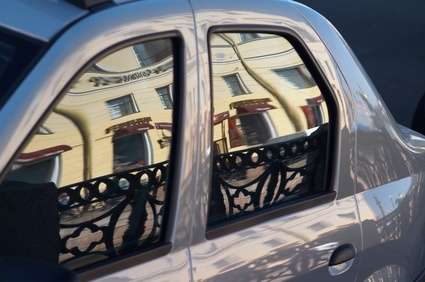
When shopping for a car, it's easy to focus on the bells and whistles and overlook some of the essentials, like window types, that can mean a lot to the day-to-day functionality of your car. Considerations such as if you car pool regularly, have children or pets, are concerned with security or park in high-debris areas (like construction sites) all play an important role in the type of windows you'll want your new car to have.
Manual roll-up windows are an old stand-by that many people remember using as children. Though manual windows aren't the popular option in today's car market, they have become more reliable and less of a hassle to roll than the earlier styles. They also have benefits versus power windows: when a car is off or dead, so is a power window. This isn't the case with manual rollers. Manual windows also avoid some of the dangers of power windows: pets and small children cannot quickly close a window with a roller. If you tend to spend time in your car off the road or if you cart pets and children regularly, manual windows may be your best option.

Power windows are the more popular of the two major types and typically come standard on newer vehicles. Power windows are rolled up and down by an automatic motor that requires the mere push of a button and offers the convenience of instant air circulation and less distraction to open or close a window while driving. The driver can also control each window in the car individually without taking his eyes of the road. Though power windows are a major driving convenience, they are at the mercy of the car's power supply and can also be more expensive to repair than manual windows. They can also be dangerous to children and pets.

A child-safety window uses a safety feature like locking or reverse power. A locking window can be "locked" in any position by the driver so that a child or pet cannot accidentally roll that window up or down. A reverse power window uses a sensor to reverse the rolling power when it comes in contact with any blockage. If a child's arm or dog's head is hanging out the window, the sensor will stop the window and reverse direction, freeing the body part and avoiding serious injury.

All modern car windows (on the sides and rear) are made with tempered, shatter-resistant glass that prevents the broken window from forming large, sharp shards. This type of glass is manufactured to exceed 100 psi (pounds per square inch) of pressure. For an even greater durability, laminated glass can be custom-installed. It is more akin to the heavy-duty glass found in windshields and is typically installed in service vehicles used around construction or other high-debris sites (where lots of heavy equipment and materials can easily shatter windows). On the extreme end of window shatter-resistance is "bulletproof" glass that is designed to withstand multiple rounds of direct gunfire. This very expensive type of window is used in law enforcement vehicles or in the cars of high-profile celebrities and businessmen.
